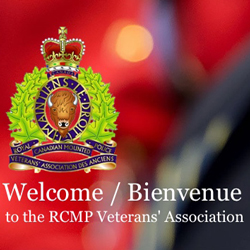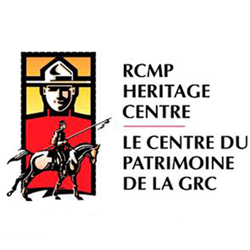Larry Burden’s This Day In The RCMP
The achievements and contributions of the Force have been built upon the individual contributions of many past Veterans. These contributions have largely been forgotten.
Veteran Sgt. Larry Burden ( #35982) served in “E” Division for 20 years has spent over ten years researching and summarizing these achievements by specific date. Nearly every day, Larry sends out an email message with a selection from his work in progress manuscript “This Day In The RCMP” to individuals interested in these historical notes.
In an effort to share his research to a large group, Larry has agreed to permit us to develop a webpage on our website. Each webpage will post Larry’s historical notations over the past week.
If you wish to contact Larry Burden or provide additional information about his research, please email him at larryburden8@gmail.com.
September 2
1752 – This marks the last day the Julian calendar was used in Britain and the Colonies. The Gregorian calendar was designed to correct the fact that under the Julian calendar there was a problem with having an extra leap year. The new calendar went into effect the following day, with the date being adjusted to September 14, dropping 11 days from this year for the adjustment. Most other countries made the adjustment over 200 years earlier in 1582!

Photograph taken by Harold Feiertag – “Buffalo Soldiers” at Medicine Hat (Source of photo – Harold Feiertag).
1874 – On this day during the march west the first buffalo were encountered and shot. Commissioner French noted in his diary “a very fine beast about 10 years old; he made, when dressed, 953 lbs. ration meat” again on Wednesday, September 23rd 1874 he noted —“Saw immense quantities of buffalo, estimated at 70 or 80 thousand by Macleod and I”.
1912 – Members of the Royal North West Mounted Police participate in the first Calgary Stampede parade.

Photograph taken from the Rose Marie movies starting Nelson Eddy leading a group of RCMP members (Source of photo – Ric Hall’s Photo Collection)
1925 – The new Friml-Hammerstein-Harbach Operetta “Rose Marie” opens on Broadway in New York to rave reviews. The cast features a group of baritone Mounties and smash hit song, “Indian Love Call”. In 1936 the production is made into a Hollywood movie starring Nelson Eddy as Sergeant Bruce and Jeanette Macdonald as Marie de Flor. Other big names in the movie include James Stewart as John Flower and David Niven as Teddy. A remake of the movie, this time filmed in Jasper Alberta was made in 1954.
1942 – #11371 Corporal Laurence P. Ryder was attacked from behind by Arnold Blaney and received a heavy blow to the head and then struck his head on a car bumper, as he was falling. The subsequent attack led to his death several months later from a stroke caused by a cerebral hemorrhage. (See January 20, 1943, Honour Roll Number 105)
1976 – Fifty years to the day from when it opened, the Detachment at Moose Factory, Ontario was closed.
1985 – #35327 / O.1820 Constable Dwight William Robinson earned both the Commissioner’s Commendation for bravery and the Medal of Bravery while working at Stettler, Alberta. When without regard to his own safety he rushed into a burning building and saved the life of Miss Rita Anderson.
After arriving at a two-story building that had a fire burning at the rear of the structure, Constable Robinson used his police car loud hailer to alert the occupant of the house and learned from her that her apartment was at the end of a long corridor that could only be accessed by an enclosed staircase. He then told her to wait for him by the door of her apartment and he would come get her. Then braving the toxic fumes that were coming from burning plastics in the toy store on the ground floor, Cst. Robinson rushed up the stairs, found Miss Anderson and escorted her to safety.
September 3
1894 -The new public holiday “Labour Day” is officially celebrated in Canada for the first time.
1970 – The Canadian Association of Chiefs of Police presented the RCMP’s first Commissioner’s Tipstaff to Commissioner W.L. Higgitt.
The tradition of the tipstaff dates back to 16th century England. Then a “tipped staff” was the symbol of authority for a variety of law enforcement officials and evolved into a badge of the King’s authority for law enforcement. Eventually the staves evolved into hollow tubes, with a tip that could be unscrewed and serve as a receptacle for transporting arrest warrants and other legal documents. Today the Commissioner’s Tipstaff is a symbol of the solemn responsibility and authority for law enforcement borne by the Commissioner of the Royal Canadian Mounted Police and it has been passed from every outgoing Commissioner to the new Commissioner at the change of command ceremony.
1978 – Around 8:00 pm the Detachment at The Pas, Manitoba, received a call from a woman regarding two men and a four year old girl who were adrift on a makeshift raft on Lake Winnipegosis. The lake was nearly 100 kms (60 miles) south-east of The Pas, and it was becoming too dark to conduct an effective search.
Thinking quickly, Detachment constables #31696 Kenneth G. Gallant and #34400 / O.1831 J. W. Richard Roy contacted Mr. Chris Duncan a local pilot and were soon enroute to the scene by float plane. After landing in the dark on rough water, the trio were pointed in the direction that witnesses had last scene the missing group. After taxing over a mile from shore with the two constables calling out into the darkness while standing on the aircraft’s floats, they found the trio clinging to a partially submerged air mattress.
As Constable Gallant was pulling one of the men onto the airplane float, he saw the other man and the child lose their grasp on the air mattress and then the child slipped below the surface. Passing the first man to Constable Roy, Gallant and the pilot dove into the water and fortunately Constable Gallant was able to locate the child and returned her to the airplane. Mr. Duncan managed to get hold of the other man but had difficulty swimming the man back to the airplane because the wind was blowing the craft away from them. Constable Gallant then dove back into the lake and assisted the pilot in swimming the man back to the plane.
In recognition of their courage under hazardous conditions in saving the lives of three individuals, Constable Gallant and pilot Chris Duncan were awarded the Commanding Officer’s Commendation and Constable Roy received a letter of commendation form Officer Commanding Thompson Sub Division.
September 4
1909 – Major General Robert Baden-Powell presides over first Boy Scout rally at Crystal Palace in London England. This was the first world Scouting event of its kind and was funded in part by Canadian High Commissioner, Lord Strathcona, Donald A. Smith. Throughout the history of the Canadian Scout Movement the RCMP has played a vital role, providing support and volunteers at every level of Scouting in Canada. In the 1980’s Scouts Canada and the RCMP combined efforts and created the RCMP Venturer and Rover programs for youth between the ages of 14 – 19.
1939 – #09119 Corporal David Rennie had neither plans, nor any thought of coming back to work after he retired in May of 1939. But thanks to World War Two, he and many other retired members of the Force were recalled to active duty.
1977 – Honour Roll Number 157.

Photograph of the grave marker for Special Constable George David Foster (Source of photo – RCMP Gravesite database).
#28632 / #S/1692 Special Constable George David Foster age 26 was killed when his aircraft, crashed on a flight from Vancouver to Victoria, B.C.
George Foster had originally joined the RCMP as a regular member and converted to a Special Constable in 1975 when he was accepted into the RCMP Air Section as a pilot.
Foster had been working in the Vancouver area on September 3rd and was unable to return to his home base in Victoria due to poor weather conditions. Though the weather was still poor early the following morning he was cleared for take-off at 2:30 am. During his flight across the Georgia Straight in a Cessna 182 he established radio contact with the Victoria Tower at 3:46 am but was never heard from again.
The wreckage of the RCMP Cessna aircraft was not located until Monday September 5th, Labour Day. The investigation determined that Constable Foster had erred when he programmed his plane’s automatic direction finder to hone in on Victoria. The setting should have been 278, but he mistakenly he dialed 378 which took him on a collision course with Mount Tuam on Saltspring Island, instead of towards Victoria.
Believing that he was flying a direct course to Victoria, he flew his plane at an altitude 100 feet below the summit of the mountain and with poor visibility flew directly into the side of the mountain.
George David Foster joined the RCMP on January 6, 1971 and never married. His body was returned to his family where he was buried in Sussex New Brunswick.
1991 – When #29852 Constable Ron A. Angell attended a complaint of a disturbance at a local bar in Dawson Creek, BC, he didn’t expect to find a man wielding a chainsaw threatening the patrons. Constable Angell took control of the situation and forced him to put down the chainsaw and took him into custody. For his courage and presence of mind he was awarded the Commanding Officers Commendation.
September 5
1945 – Canada is thrust into the international limelight when Soviet cipher clerk Igor Gouzenko (1919-1982) defects from the USSR Embassy taking with him more than 100 secret documents hidden under his coat. The documents detail the inner workings of a major Soviet spy ring in Canada that reach into the Department of External Affairs code room, the British High Commissioner’s Office and the Chalk River nuclear facility. After the RCMP concludes their investigation 20 espionage trials are held resulting in nine criminal convictions, including a Member of Parliament. Gouzenko is given a new identity and lives out the rest of his life in Canada and dies in 1982.

Photograph of Canadian 34 cent commemorate stamps recognizing the contributions made by Assistant Commissioner James Macleod and Chief Crowfoot.
1986 – Canada Post Corporation unveils a new 34-cent stamp commemorating Assistant Commissioner James Farquharson Macleod at a satellite ceremony in the foyer of RCMP Headquarters in Ottawa. The official launching ceremony occurred at Fort MacLeod Alberta where the stamps honouring MacLeod and Chief Crowfoot were unveiled. Present for the unveiling ceremony in Ottawa were the Honorable Jude Rene’ J. Marin, Deputy Commisioner J.F. J. Bosse’ and Sergeant Carl Stoski and Corporal Pierre Belanger.
1991 – After a drunken, agitated man went on a shooting rampage in Igloolik, NWT #32100 Corporal Dean E. Taylor confronted the man and ordered him to put down his .303 caliber rifle. Eventually the gunman calmed down and surrendered his weapon and was arrested. In recognition of his courage and presence of mind Corporal Taylor was awarded the Commissioners Commendation.


 September 4, 2014
September 4, 2014 









